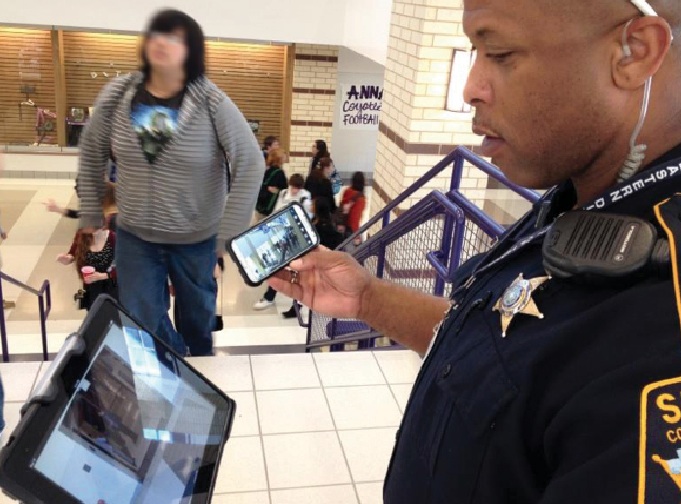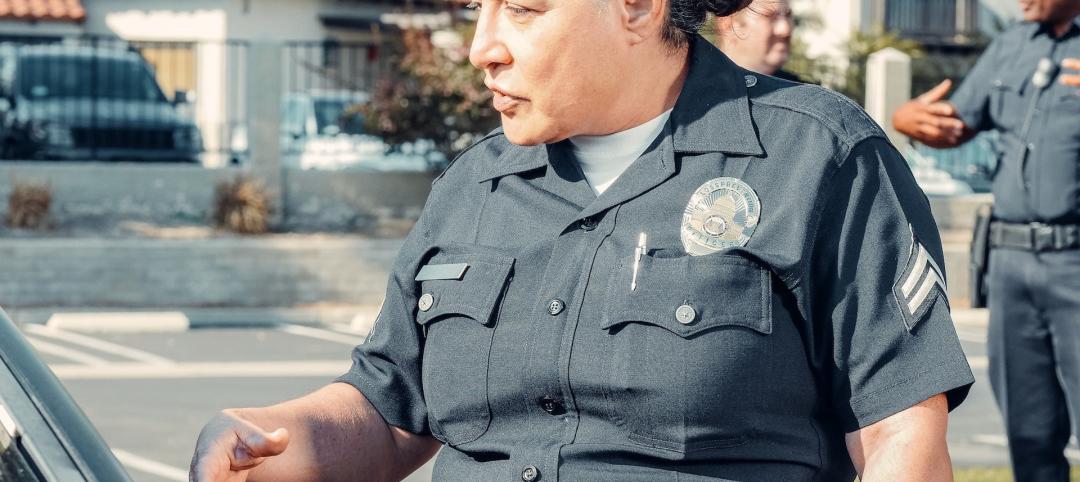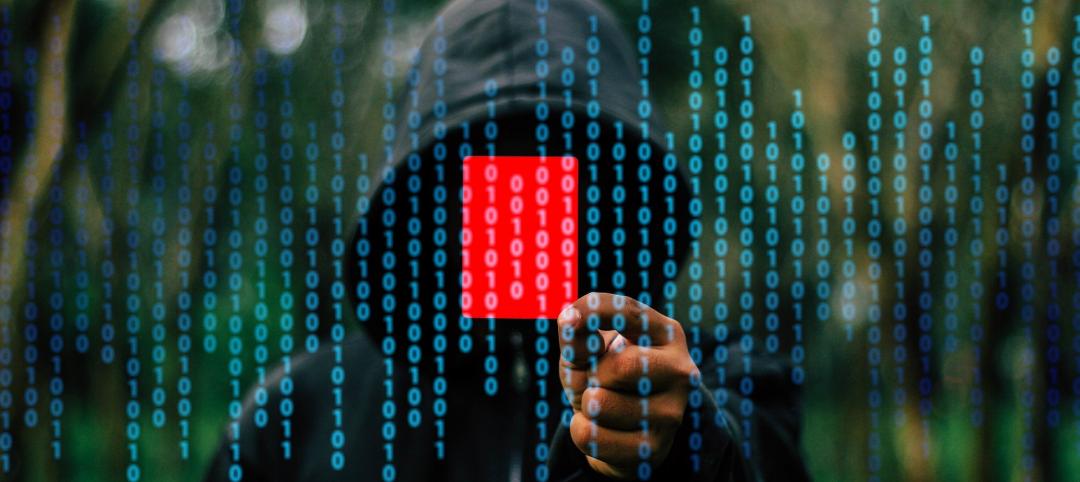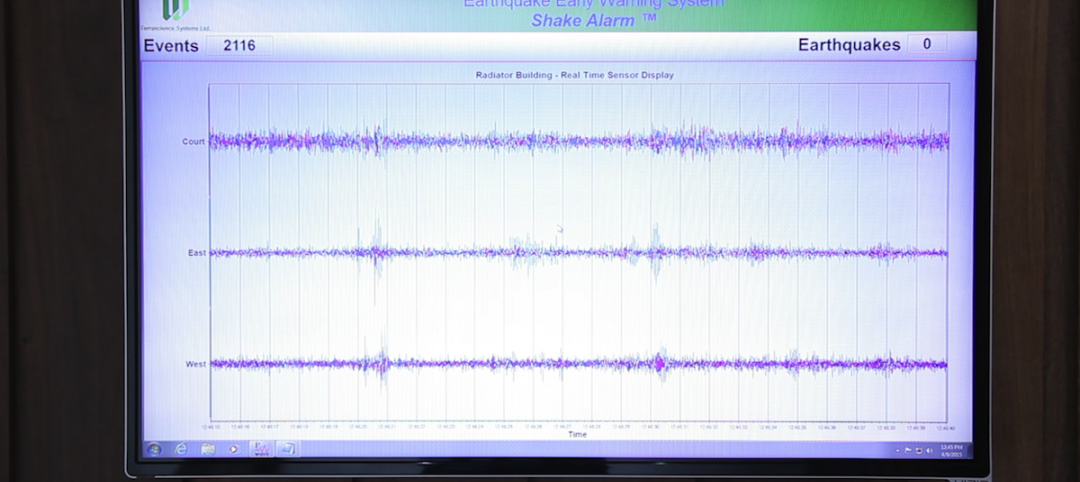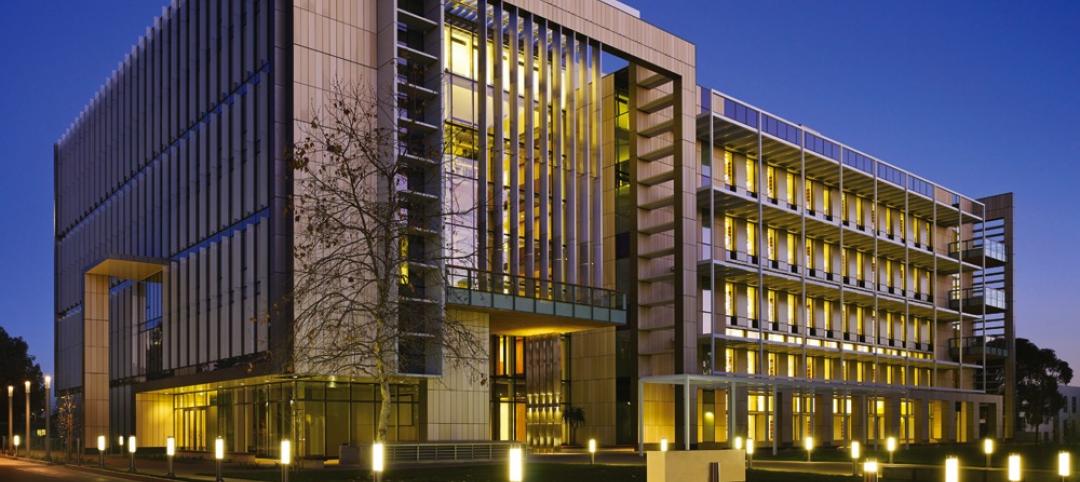"Will a camera stop crime? No, but it can be a deterrent,” says Pat Lamb, School Safety Director, Irving (Texas) Independent School District. Technology is an important component of school security, but it is no panacea.
The good news is that security technology keeps getting better and better. But security hardware and software—and the systems integration expertise that goes with it—does not come cheap.
(Editor's Note: This article is the second in BD+C's five-part special report on security design for K-12 school projects. Read the full report.)
Based on advice from the technical experts consulted for this Special Report, here are key technology-related considerations you should discuss with your school district clients:
1. Look for PTZ cameras, which point, tilt, and zoom. Due to their ability to cover more space on an active basis, you may be able to use fewer cameras with PTZs, thus saving money for your K-12 client.
2. Make sure cameras provide facial recognition at all entry points to the building. The receptionist should not have to ask visitors, “Could you please step back so I can see your face?”
3. Cameras should be capable of at least seven frames/second, says Ultrasafe Security’s Ron Lander, a veteran of 23 years with the LA County Sheriff’s Department.
4. Cameras should be positioned to afford good sight lines down hallways, into stairwells, and outside restrooms and locker areas.
5. Cameras should have bullet-resistant domes and should not freeze. And never use a “dummy” camera—they don’t serve as a deterrent, says security consultant Ken Glantz.
6. Go for IP-based surveillance systems, rather than analog. “Anyone who’s running coaxial cameras today is outdated,” says Larry Johnson, Security Director, Grand Rapids (Mich.) Public Schools.
7. Investigate PoE, or “power over Ethernet,” for school districts’ camera and door-locking systems, advises John Laney, Chief Operations Officer, North Texas Communications. PoE passes electrical power along with data on Ethernet cabling. This greatly reduces the amount of wiring needed and makes it much easier to retrofit older schools, says Laney.
8. All doors with access to the exterior should able to be locked down; if held open more than, say, 30 seconds, a “Door Open” alarm should be sent to the front office and the School Resource Officer.
9. For retrofits, look into locking systems that let you secure doors through the crash bar or door strike, thus making the “open back door” problem much less of a security risk.
10. Help the school district decide on the appropriate locking protocol for classroom doors. Teachers should have the ability to lock doors from the inside, but there should be a failsafe to prevent children from doing so. There are systems that allow the principal to lock down all classroom doors in an emergency, but the teacher should still be able to open the door to let a child in. In no case should a teacher have to lock the door from outside the classroom.
11. Manual key systems are passé. Keys are too easy to duplicate, or they get lost. IP-based door hardware is the way to go, for new schools or retrofits.
12. Mass notification systems—for robocalls to first responders, parents, and staff—are readily available from manufacturers, but remind school officials that, with people changing their mobile providers all the time, correct phone numbers have to be constantly updated.
13. Work with the school district security team to find the best options for intercom systems, alarm annunciators, internal notification systems, and two-way radios.
14. Make sure bus drivers’ radios tie in to the main office or to local police—or both. “With some of these systems, the driver can only talk to the bus garage, and the garage has to call the police,” says security consultant Alan Brockbank. “Precious seconds can be lost, and those few seconds matter.”
15. School buildings should have at least a 100-kW UPS power backup for cameras, DVRs, and annunciation/notification systems. UPS systems should be tested on a regular basis and properly maintained.
16. For new and retrofit lighting, consider LEDs. “They’re a little expensive, but the ROI is fantastic, and you want good lighting for security purposes,” says Lander. “If it comes to a hostage situation, you need light, because not every first responder is going to have a nightscope.”
One last suggestion: Because security technology is changing so fast, your firm should assign a staff member to monitor new products, their costs, and their capabilities, not just for use in schools, but in any security-sensitive sector where your firm has a strong presence—retail, hotel, office, financial services, government, and defense.
(Editor's Note: This article is the second in BD+C's five-part special report on security design for K-12 school projects. Read the full report.)
Related Stories
K-12 Schools | Jan 25, 2023
As gun incidents grow, schools have beefed up security significantly in recent years
Recently released federal data shows that U.S. schools have significantly raised security measures in recent years. About two-thirds of public schools now control access to school grounds—not just the building—up from about half in the 2017-18 school year.
BAS and Security | Oct 19, 2022
The biggest cybersecurity threats in commercial real estate, and how to mitigate them
Coleman Wolf, Senior Security Systems Consultant with global engineering firm ESD, outlines the top-three cybersecurity threats to commercial and institutional building owners and property managers, and offers advice on how to deter and defend against hackers.
Security and Life Safety | Jul 5, 2022
What AEC firms should look for in a cybersecurity partner
When looking for expert partners in cybersecurity, AEC firms will find quite a lot of companies claiming to be at the forefront of modern threats. Here are five key points to look for when choosing a cybersecurity firm.
Smart Buildings | Jun 1, 2022
Taking full advantage of smart building technology
Drew Deatherage of Crux Solutions discusses where owners and AEC firms could do better at optimizing smart technology in building design and operations.
BAS and Security | May 26, 2022
Can your intelligent building outsmart hackers?
ESD's security services studio leader Coleman Wolf offers tips, advice, and lessons for protecting real estate assets from cyberattacks.
75 Top Building Products | Dec 16, 2019
101 Top Products for 2019
Building Design+Construction readers and editors select their top building products for the past 12 months in the fourth-annual 101 Top Products report.
Seismic Design | Jun 9, 2015
First building-specific earthquake warning system installed in North Portland, Ore.
The ShakeAlarm system recognizes and quantifies the faster but lower-energy seismic P-wave, which is the precursor to the more damaging S-wave.
Fire and Life Safety | May 27, 2015
7 bold applications and innovations for fire and life safety
BD+C’s roundup features colorful sprinklers for offices, hotels, museums; a fire-rated curtain wall at a transit hub in Manhattan; a combination CO/smoke detector; and more.
University Buildings | Feb 20, 2015
Penn strengthens campus security by reviving its surrounding neighborhood
In 1996, the University of Pennsylvania’s sprawling campus in Philadelphia was in the grip of an unprecedented crime wave. But instead of walling themselves off from their surrounding neighborhoods, the school decided to support the community.
University Buildings | Feb 17, 2015
BD+C exclusive: How security is influencing campus design and construction
Campus crime—whether real or perceived—presents Building Teams with more opportunities for early-stage consultation with university clients.


